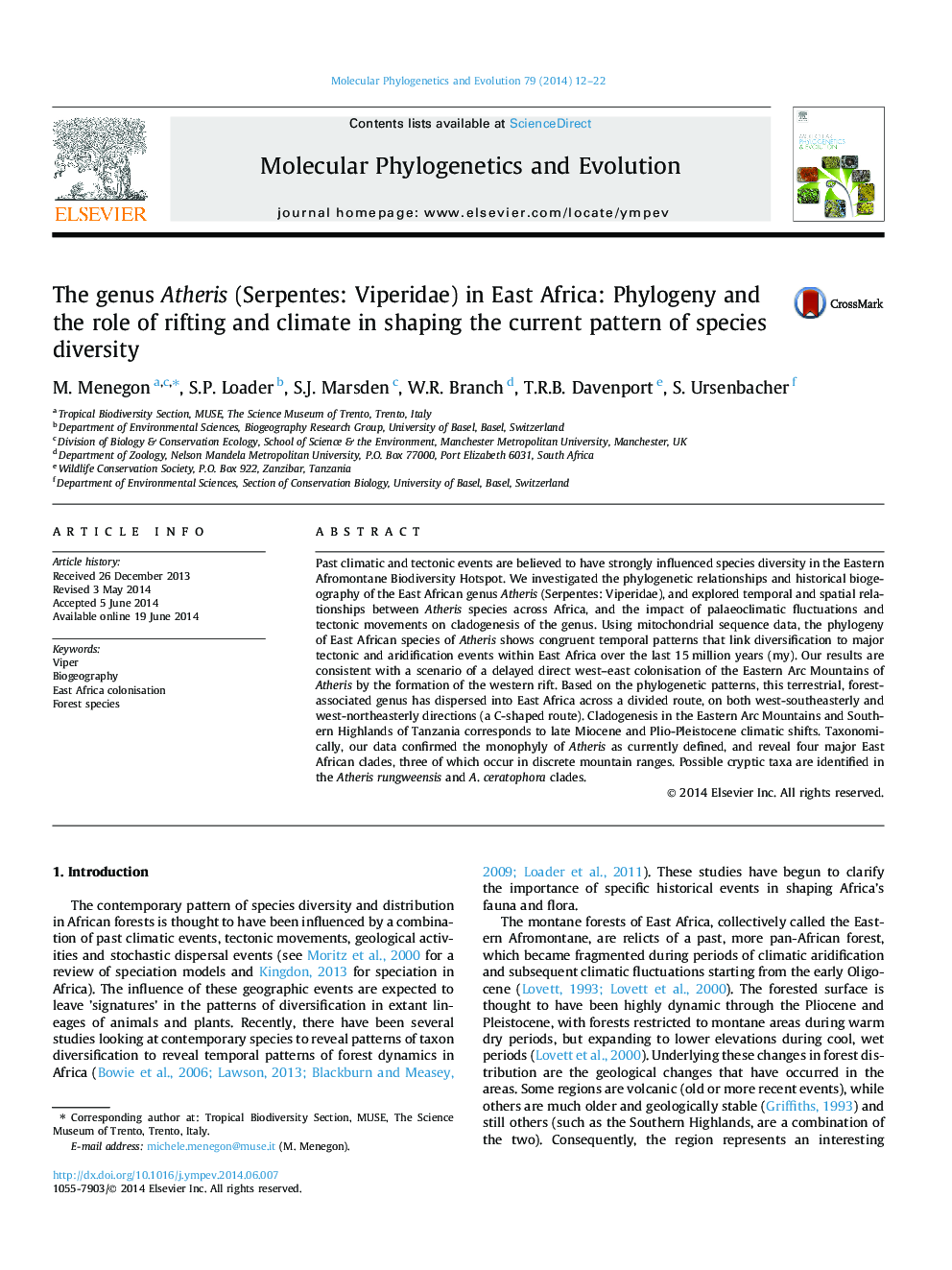| کد مقاله | کد نشریه | سال انتشار | مقاله انگلیسی | نسخه تمام متن |
|---|---|---|---|---|
| 5919182 | 1570816 | 2014 | 11 صفحه PDF | دانلود رایگان |

- The first members of the Atheris genus occurred across Africa since mid-Miocene, soon after the split from other viperids.
- Main splits within the genus correspond to known periods of aridification or climatic perturbations in Africa.
- The genus colonized the Tanzanian Mountains some 7Â million year after it is first appearance in East Africa.
- Delayed colonization of the Tanzania Mountains could be due to the effect of the Western Branch of the Great Rift Valley.
- Cladogenesis in the Mountains of Tanzania correspond to climatic shifts in late Miocene and Plio-Pleistocene.
Past climatic and tectonic events are believed to have strongly influenced species diversity in the Eastern Afromontane Biodiversity Hotspot. We investigated the phylogenetic relationships and historical biogeography of the East African genus Atheris (Serpentes: Viperidae), and explored temporal and spatial relationships between Atheris species across Africa, and the impact of palaeoclimatic fluctuations and tectonic movements on cladogenesis of the genus. Using mitochondrial sequence data, the phylogeny of East African species of Atheris shows congruent temporal patterns that link diversification to major tectonic and aridification events within East Africa over the last 15Â million years (my). Our results are consistent with a scenario of a delayed direct west-east colonisation of the Eastern Arc Mountains of Atheris by the formation of the western rift. Based on the phylogenetic patterns, this terrestrial, forest-associated genus has dispersed into East Africa across a divided route, on both west-southeasterly and west-northeasterly directions (a C-shaped route). Cladogenesis in the Eastern Arc Mountains and Southern Highlands of Tanzania corresponds to late Miocene and Plio-Pleistocene climatic shifts. Taxonomically, our data confirmed the monophyly of Atheris as currently defined, and reveal four major East African clades, three of which occur in discrete mountain ranges. Possible cryptic taxa are identified in the Atheris rungweensis and A. ceratophora clades.
192
Journal: Molecular Phylogenetics and Evolution - Volume 79, October 2014, Pages 12-22